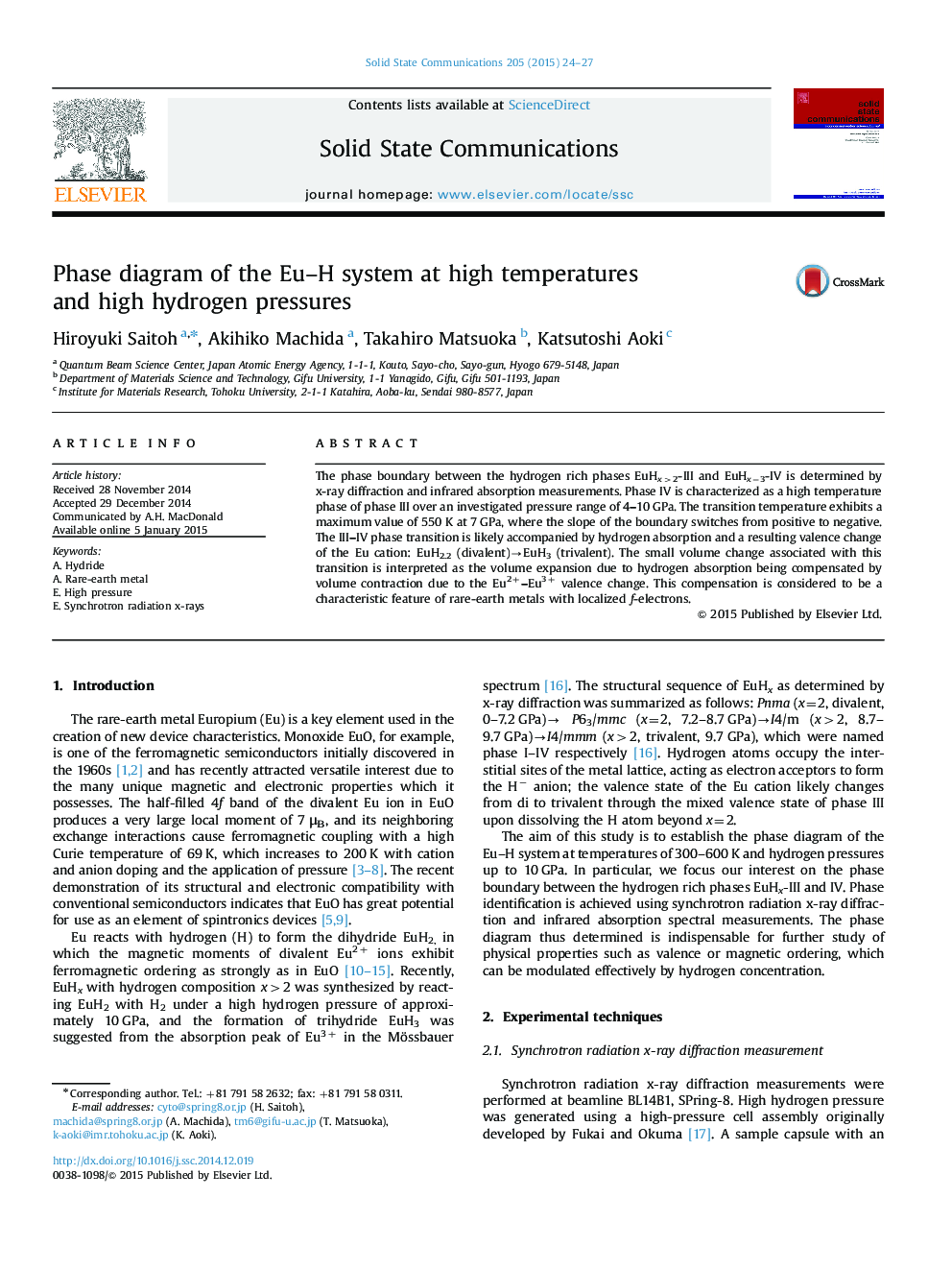| Article ID | Journal | Published Year | Pages | File Type |
|---|---|---|---|---|
| 1591646 | Solid State Communications | 2015 | 4 Pages |
•The phase boundary between EuHx>2-III and EuHx−3-IV is determined.•The transition temperature exhibits a maximum value of 550 K at 7 GPa.•The volume expansion by hydrogenation is compensated by the Eu2+–Eu3+ valence change.
The phase boundary between the hydrogen rich phases EuHx>2-III and EuHx−3-IV is determined by x-ray diffraction and infrared absorption measurements. Phase IV is characterized as a high temperature phase of phase III over an investigated pressure range of 4–10 GPa. The transition temperature exhibits a maximum value of 550 K at 7 GPa, where the slope of the boundary switches from positive to negative. The III–IV phase transition is likely accompanied by hydrogen absorption and a resulting valence change of the Eu cation: EuH2.2 (divalent)→EuH3 (trivalent). The small volume change associated with this transition is interpreted as the volume expansion due to hydrogen absorption being compensated by volume contraction due to the Eu2+–Eu3+ valence change. This compensation is considered to be a characteristic feature of rare-earth metals with localized f-electrons.
